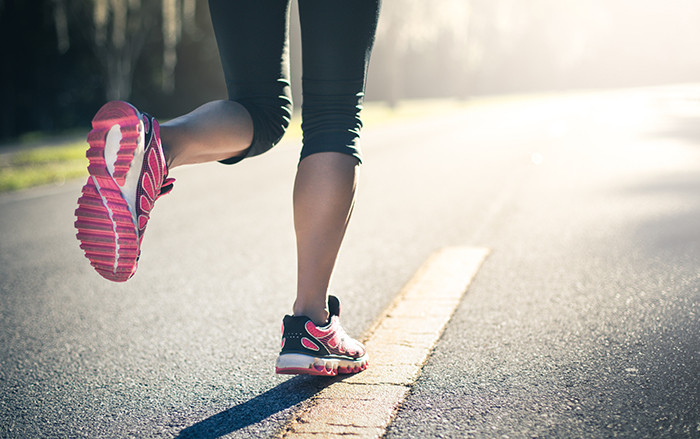Improve your running mechanics is essential for improving performance and reducing injury risk. Legitimate structure improves effectiveness, permitting sprinters to cover more distance with less exertion. Key rules incorporate keeping a tall stance with a slight forward lean, drawing in the center for steadiness, and zeroing in on a midfoot or forefoot strike. The length and cadence of the stride are crucial; hold back nothing step without overstriding and keep an ideal step rate. Integrating designated strength works out, like center and hip exercises, can assemble the essential strong help. Reliable act of running drills and looking for proficient direction guarantees an all encompassing way to deal with refining running mechanics.
Posture and Alignment: The Foundation of Effective Running Mechanics
Keeping up with legitimate stance and arrangement is vital to opening the maximum capacity of your running mechanics. A strong groundwork starts with your body’s situation while moving, impacting everything from energy productivity to injury counteraction.
1. Head-to-Toe Alignment: The Blueprint for Efficiency
Accomplishing a straight line from your head-to-toe guarantees ideal biomechanical effectiveness. Keep your head up, eyes forward, and bears loose. Momentum can be increased without jeopardizing balance by leaning slightly forward from the ankles rather than the waist. This arrangement limits air obstruction and considers a smoother progress through each step.
2. Engaging the Core: Stability for Endurance and Control
A solid and drew in center is the key part of good running stance. It provides stability by ensuring that the energy generated by each step is directed forward and preventing unnecessary side-to-side movements. Center around practices that focus on the muscular strength, obliques, and lower back to construct a vigorous center establishment.
3. Arm Swing Precision: Syncing Upper and Lower Body Movements
The arms assume an essential part in keeping up with equilibrium and cadence. Hold back nothing and controlled arm swing, permitting your arms to move normally in a state of harmony with your legs. Legitimate coordination of arm developments can upgrade by and large soundness, limit squandered energy, and add to a more liquid and proficient running step.
Strategic Strides: Balancing Length and Cadence for Optimal Performance
Understanding and calibrating your step length and rhythm are essential components in accomplishing top running execution. Finding some kind of harmony between these two elements upgrades productivity as well as contributes fundamentally to injury counteraction and by and large perseverance.
1. Optimal Stride Length: Finding the Sweet Spot
Step length alludes to the distance covered with each step. While a more extended step might appear to be valuable, it frequently prompts overstriding, expanding the gamble of injury. Take a stab at an agreeable and normal step length that considers a smooth and controlled stride. Stay away from extreme stretching, as it can prompt expanded influence powers and weight on joints.
2. Cadence: The Rhythmic Beat of Efficient Running
One of the most important aspects of running mechanics is cadence, or the number of steps taken per minute. In most cases, a lower impact force and shorter ground contact time are correlated with a higher cadence. Hold back nothing between 170-180 stages each moment, changing it as indicated by your singular solace and speed. This musical methodology disseminates the responsibility among muscles and joints all the more uniformly.
3. Stride Dynamics: Harmonizing Length and Cadence
Finding some kind of harmony includes blending step length with rhythm. Explore different avenues regarding slight changes in accordance with find the blend that feels generally normal and manageable for your body. Routinely survey and calibrate your step elements to oblige changes in territory, speed, and weariness levels, guaranteeing flexibility in different running circumstances.
Strength Training Essentials: Building Stability for Improved Running Mechanics
Incorporating a balanced strength preparing routine into your routine is essential for upgrading running mechanics. Muscles that are stable and strong provide the necessary support, making movement more efficient and lowering the risk of injury.
1. Core Stability: The Powerhouse for Balanced Running
A vigorous center is the focal point of security for sprinters. Participate in practices focusing on the abs, obliques, and lower back to develop fortitude and perseverance. A steady center limits overabundance development, taking into consideration a more controlled and productive exchange of energy during each step.
2. Hip Strength: Foundation for Fluid Movement
Solid hip muscles are fundamental for keeping up with legitimate arrangement and forestalling normal issues like IT band disorder. Consolidate activities like squats, lurches, and hip abductor/adductor exercises to develop fortitude in the hip flexors, abductors, and rotators. A running motion that is smoother and more fluid is made possible by this foundation.
3. Leg Strength: Supporting the Stride
It is essential to strengthen the muscles in your legs, such as your quadriceps, hamstrings, and calves, in order to support the repeated impact of running. Designated strength practices improve perseverance and diminish the gamble of exhaustion related remunerations that can prompt unfortunate running mechanics.
Conclusion:
Upgrading your running mechanics is a complex excursion that includes thoughtfulness regarding stance, step elements, and solid strength. By focusing on appropriate arrangement, offsetting step length with rhythm, and integrating designated strength preparing, you lay the foundation for improved execution and injury versatility. Keep in mind that a holistic approach and consistency are the keys. Ordinary self-evaluation, combined with a pledge to refining and reinforcing your body’s mechanics, works on your running effectiveness as well as changes each run into a more pleasant and economical experience. Embrace the excursion of persistent improvement for a better, seriously satisfying running experience.













